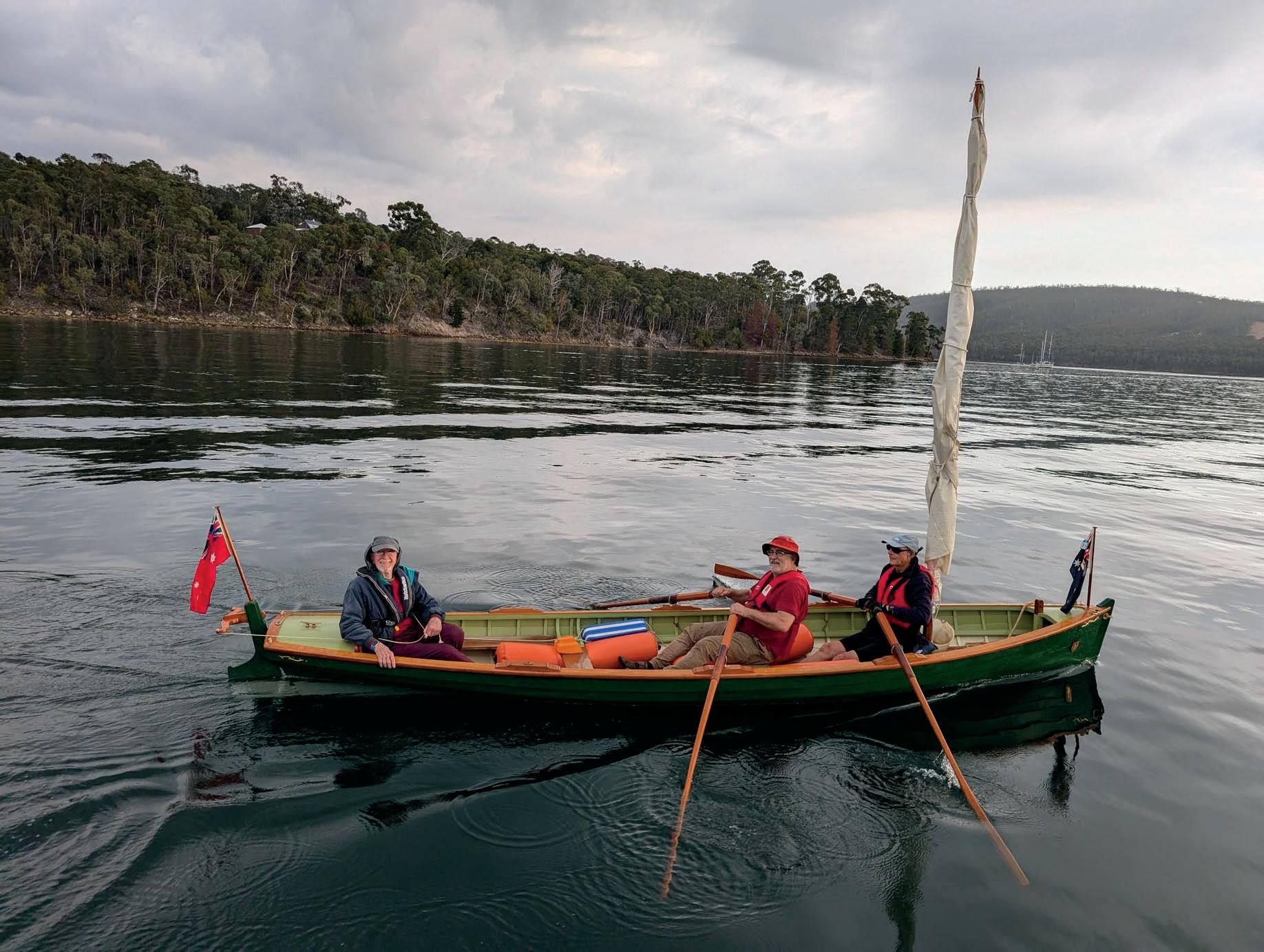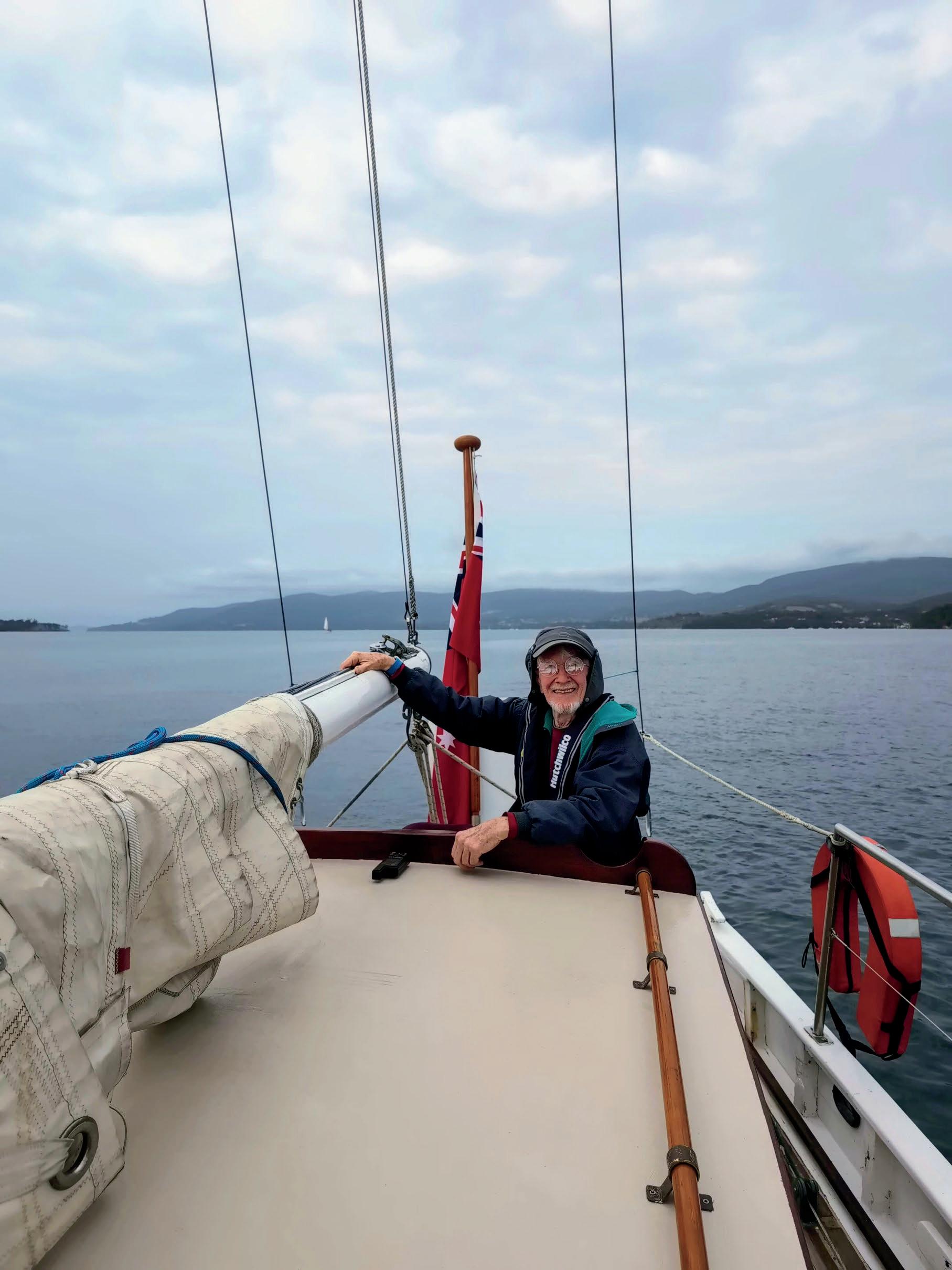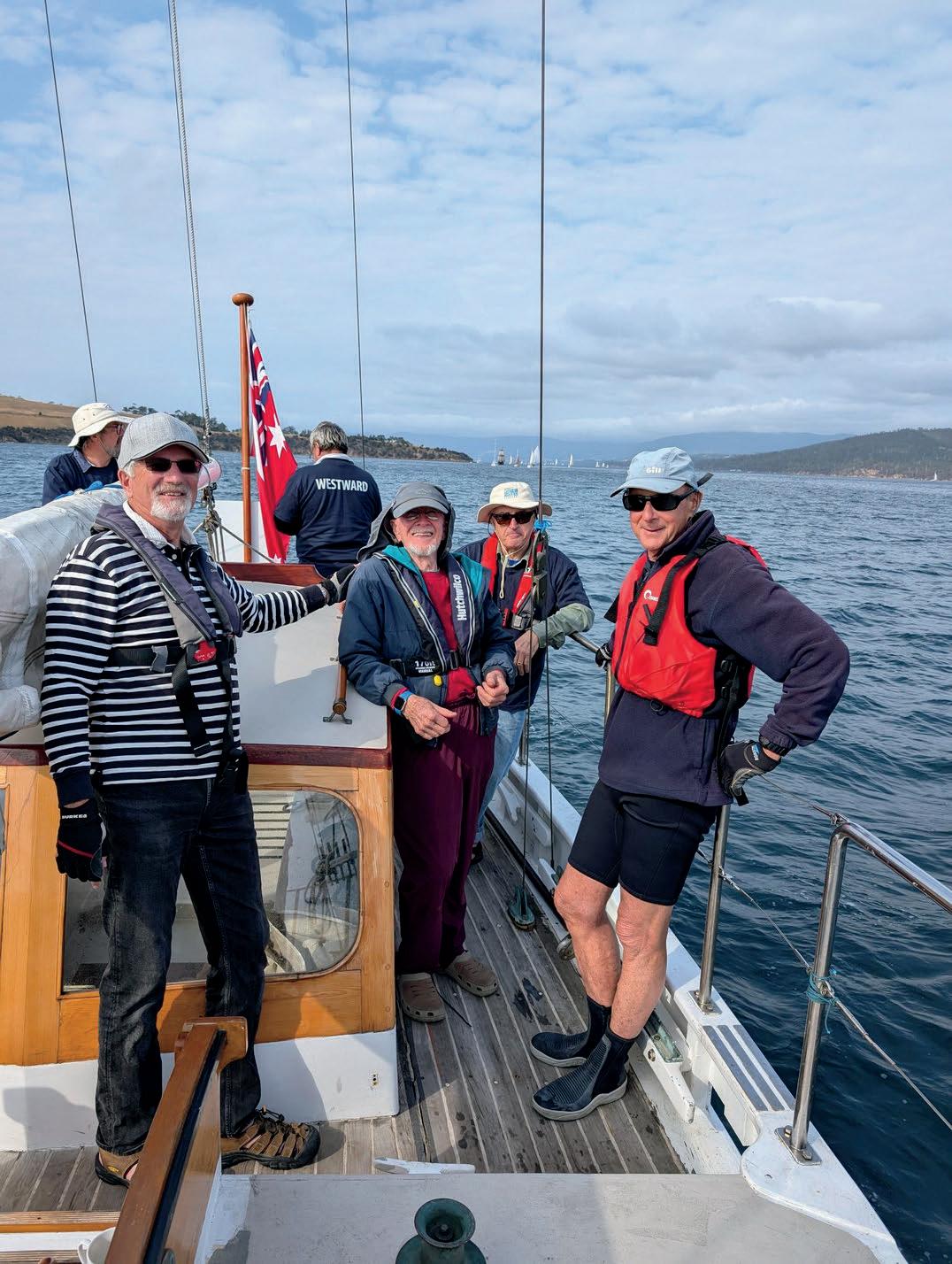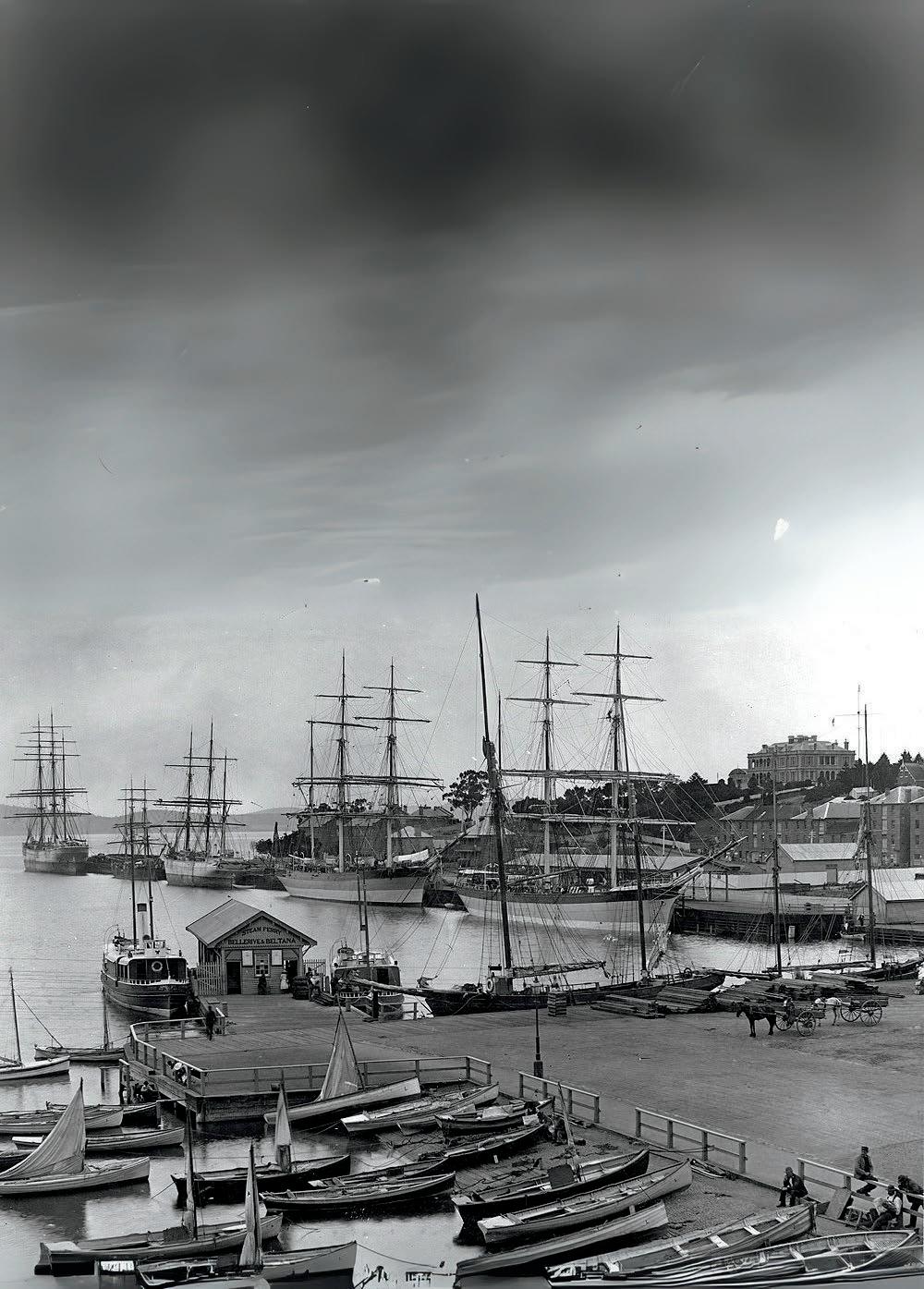
4 minute read
From storage to sail-past:
Ramping Lion’ s return to the river
BY ROSS JAMES, PHOTOS BY SALLY DEXTER
Hobart is blessed in being a linear development along the banks of a relatively well-mannered river. From the time of the first European settlers and even before, boats were a common option for travel along the river. Colourful stories were told of the Hobart watermen, a particularly notorious clique of individuals who could be engaged to deliver you up, down or across the water. Their boats came from various sources, some old chasers from the whalers that called Hobart home, some redundant gigs from broken up vessels, and some scratch-built by the myriad of shipwrights engaged along the river and channel.
One week prior to the 2025 Australian Wooden Boat Festival, Ramping Lion was disinterred. Each individual component carefully wrapped and labelled by the Australian National Maritime Museum was attacked by a group of MMT volunteers. Like demented Santa’s elves, casting foam packing and paper wrapping aside with vigour.
Once all components were accounted for, The Living Boat Trust loaned a suitable trailer. Loaded on to the trailer, securely tied down, she was led to the waters of Oyster Cove Marina in Kettering. These stories would usually include here a line saying that on launching she rode majestically upon the wavelets. The truth is, in the half hour it took to reach her allocated berth, the water level was lapping at the bottom of the seat thwarts. Thankful that we had installed three large inflatable buoyancy bags, the volunteers gingerly abandoned ship. Over the next few days of occasional bailing out to assess if the planks were taking up, it was great to see that by day four she was remaining mostly water tight.
Early morning of the AWBF sail past, a crew assembled in Kettering on both Ramping Lion and mother ship, Westward.
Heading into the rising sun through the anchorage of Little Oyster Cove undisturbed by any breeze, Ramping Lion made an idyllic sight.

All the way to Tinderbox Point with a few crew changes, we averaged a steady three and a half knots using the little spirit rig. Mindful of the need to meet the midday rendezvous for the sail past and an uncomfortable southerly building, Ramping Lion was towed by Westward to Nutgrove Beach, where the crew was again put aboard for the sail past and an uncomfortable—but entirely successful—completion of the journey.

Relieved from her role of minding her dinghy partner, Westward was free to line up to enter Constitution Dock, and what a line it was! While doing conservative donuts in the crowded outer harbour, wrestling with the fresh southerly, a queue formed, mostly following a clockwise pattern of luxury varnished temples, family cruising yachts, experimental fishing platforms and canoes, all waiting for the lifting bridge to grant access. We watched in awe as the freshly restored Te Uira, lee hull well awash, a cream cloud of jibs, main and top sail un-reefed leaving a wake of pure foam fearlessly romped past the more temperate of us.

It was with huge sighs of relief from the entire crew that, now alongside May Queen, in her allocated berth, we tightened the last of the lines, and opened the first of the wines. For Westward, the Australian Wooden Boat Festival had begun. Four days of telling Westward’s story to anyone too exhausted to walk away, showing Hobartians and world travellers alike the intricacies of this Jock Muir wonder yacht. If we missed you at the festival, please do come to the museum where we are happy to tell the story again.









